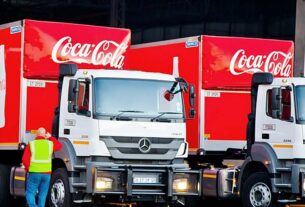Thu 15 June 2023:
Sri Lankan military physicians removed the world’s largest kidney stone from a 62-year-old former soldier on Wednesday.
According to the army, the stone removed from ex-sergeant Canistus Coonge weighed 801 grams (28.25 ounces), which is more than five times the weight of a normal male kidney.
Coonge’s kidney stone was 13.37 centimetres (5.26 inches) long, although the average kidney is 10 to 12 cm long.
“The removal of the world’s largest and heaviest kidney stone through a major surgery occurred on June 1 at the Colombo Army Hospital,” the military said in a statement.

Coonge told the local Swarnavahini TV that he had abdominal pain since 2020 and oral medication had not helped.
“I was told to undergo surgery after a recent scan,” he said. “I feel normal now.”
The Sri Lankan case surpassed the largest kidney deposit previously recorded of 620 grams from a patient in Pakistan in 2008, according to Guinness World Records.

Officials announced the finding on Wednesday after Guinness World Records recognised it.
“The most important thing for us is that the kidney is functioning normally despite this stone,” army surgeon K. Sutharshan said.

What’s a kidney stone?
A stone in your kidney is an irregularly-shaped solid mass or crystal that can be as small as a grain of sand up to the size of a golf ball. Depending on the size of your kidney stone (or stones), you may not even realize that you have one. Even small stones can cause extreme pain as they exit your body through your urinary tract. Drinking fluids may help the process, which can take as long as three weeks.
A large kidney stone can get trapped in your ureter (the tube that drains urine from your kidney down to your bladder). When this happens, the stone can cause bleeding and keep urine from leaving your body. You may need surgery for a stone that can’t pass on its own.
How common are kidney stones?
Researchers have concluded that about one in ten people will get a kidney stone during their lifetime. Kidney stones in children are far less common than in adults but they occur for the same reasons. They’re four times more likely to occur in children with asthma than in children who don’t have asthma.
What are the symptoms of kidney stones?
You can have a stone in your kidney for years and not know it’s there. But, when it starts to move or becomes very large, you may have symptoms. Symptoms of a kidney stone include:
- Feeling pain in your lower back or side of your body. This pain can start as a dull ache that may come and go. It can also become severe and result in a trip to the emergency room.
- Having nausea and/or vomiting with the pain.
- Seeing blood in your urine.
- Feeling pain when urinating.
- Being unable to urinate.
- Feeling the need to urinate more often.
- Fever or chills.
- Having urine that smells bad or looks cloudy.
Smaller kidney stones may not cause pain or other symptoms. These “silent stones” pass out of your body in your urine.
SOURCE: INDEPENDENT PRESS AND NEWS AGENCIES
______________________________________________________________
FOLLOW INDEPENDENT PRESS:
TWITTER (CLICK HERE)
https://twitter.com/IpIndependent
FACEBOOK (CLICK HERE)
https://web.facebook.com/ipindependent
Think your friends would be interested? Share this story!





